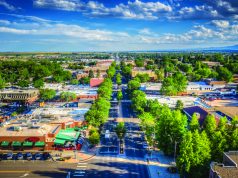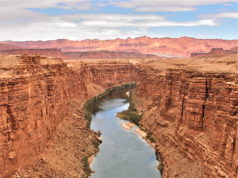WASHINGTON — A top U.S. envoy arrived in South Korea on Sunday for a week of meetings with Asian officials as the Obama administration grapples with revelations that North Korea is moving ahead with plans to process uranium that could be used in nuclear weapons.
Adm. Mike Mullen, chairman of the Joint Chiefs of Staff, said reports from two U.S. experts who toured a uranium-enrichment facility in North Korea validate long-standing concerns about the communist nation’s intent to develop an arsenal of nuclear weapons.
“It’s North Korea continuing on a path which is destabilizing for the region,” Mullen said on CNN’s “State of the Union with Candy Crowley.” “It confirms or validates the concern we’ve had for years about their enriching uranium, which they deny routinely.”
He said reports that North Korea
is building a plant to enrich uranium, which could be used for
producing nuclear power or bombs, are consistent with the country’s
“belligerent behavior.” He also cited the sinking of a South Korean
warship in March, which killed 46 sailors. North Korea denied it was responsible for the vessel’s sinking.
The U.S. team sent for talks is headed by Stephen Bosworth, the State Department’s special representative for policy on North Korea. He will meet with officials in South Korea, Japan and China.
For U.S. officials, the latest revelation also supports arguments they have made to North Korea’s allies in China that the reclusive regime is not serious about negotiations to end its nuclear program.
Defense Secretary Robert M. Gates said Sunday that the disclosure confirms suspicions that Pyongyang had a secret enrichment effort underway as part of a strategy of expanding its nuclear arsenal.
Pyongyang conducted nuclear tests in 2006 and 2009 and is believed to have a small number of nuclear devices.
“An enrichment plant like this, assuming that’s what
it is, obviously gives them the potential to create a number more,”
Gates said in Santa Cruz, Bolivia, where he is attending a defense ministers meeting.
North Korea’s
existing weapons were manufactured from the spent fuel from a nuclear
reactor, not from enriched uranium. U.S. officials have suspected for
more than a decade that North Korea was operating an enrichment program as an alternative means for developing weapons-grade material.
The North Korean facility was described Saturday by
an American scientist who visited it as a modern plant containing more
than 1,000 centrifuges for uranium enrichment. North Korea said the plant was intended to create fuel to produce electricity for civilian uses.
The scientist, Siegfried S. Hecker, a former director of Los Alamos National Laboratory,
said the plant appeared to be for civilian use but that it could be
easily converted to produce highly-enriched uranium for weapons.
“The first look through the windows of the
observation deck into the two long high-bay areas was stunning,” Hecker
wrote in a report. “Instead of seeing a few small cascades of
centrifuges, which I believed to exist in North Korea, we saw a modern, clean centrifuge plant of more than a thousand centrifuges all neatly aligned and plumbed below us.”
Hecker and Jack Pritchard, a former U.S. envoy for negotiations with North Korea,
have already reported on construction of what appears to be a
light-water nuclear reactor. “New construction seen in the satellite
imagery is indeed the construction of the experimental light-water
reactor,” they said in a report to the Institute for Science and
International Security in Washington. Light-water reactors are mostly commonly used to make electricity, but can be used to process weapons-grade plutonium.
Gordon Flake, an expert on North Korea at the Mansfield Foundation in Washington, said news of the enrichment facility supports the case U.S. officials have been making to China that Pyongyang is not serious about reviving the six-party talks.
Speaking on ABC’s “This Week with Christiane Amanpour,” Mullen said China’s help would be important in bringing international pressure on North Korean to back off the nuclear program.
———
(c) 2010, Los Angeles Times.
Visit the Los Angeles Times on the Internet at http://www.latimes.com/.
Distributed by McClatchy-Tribune Information Services.














